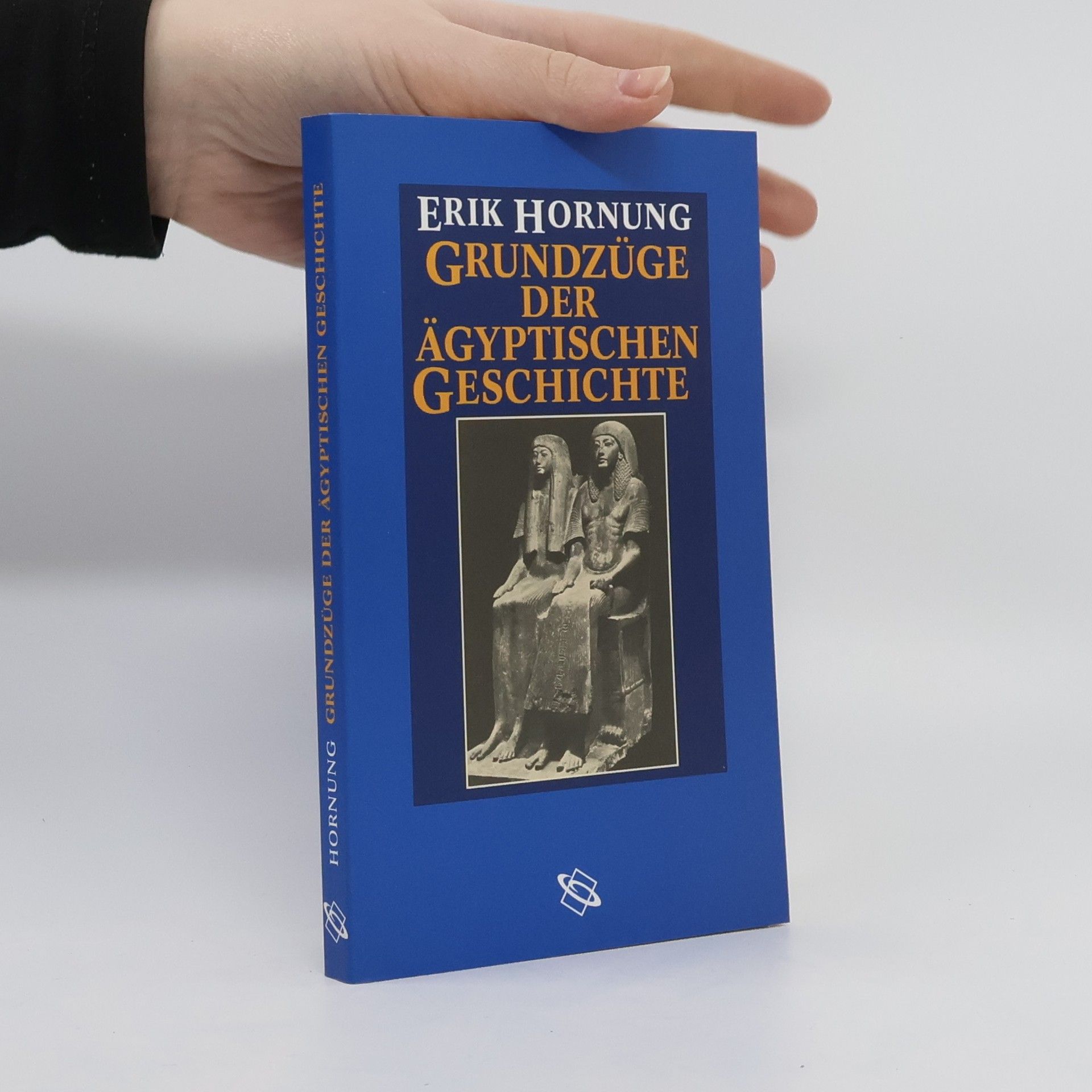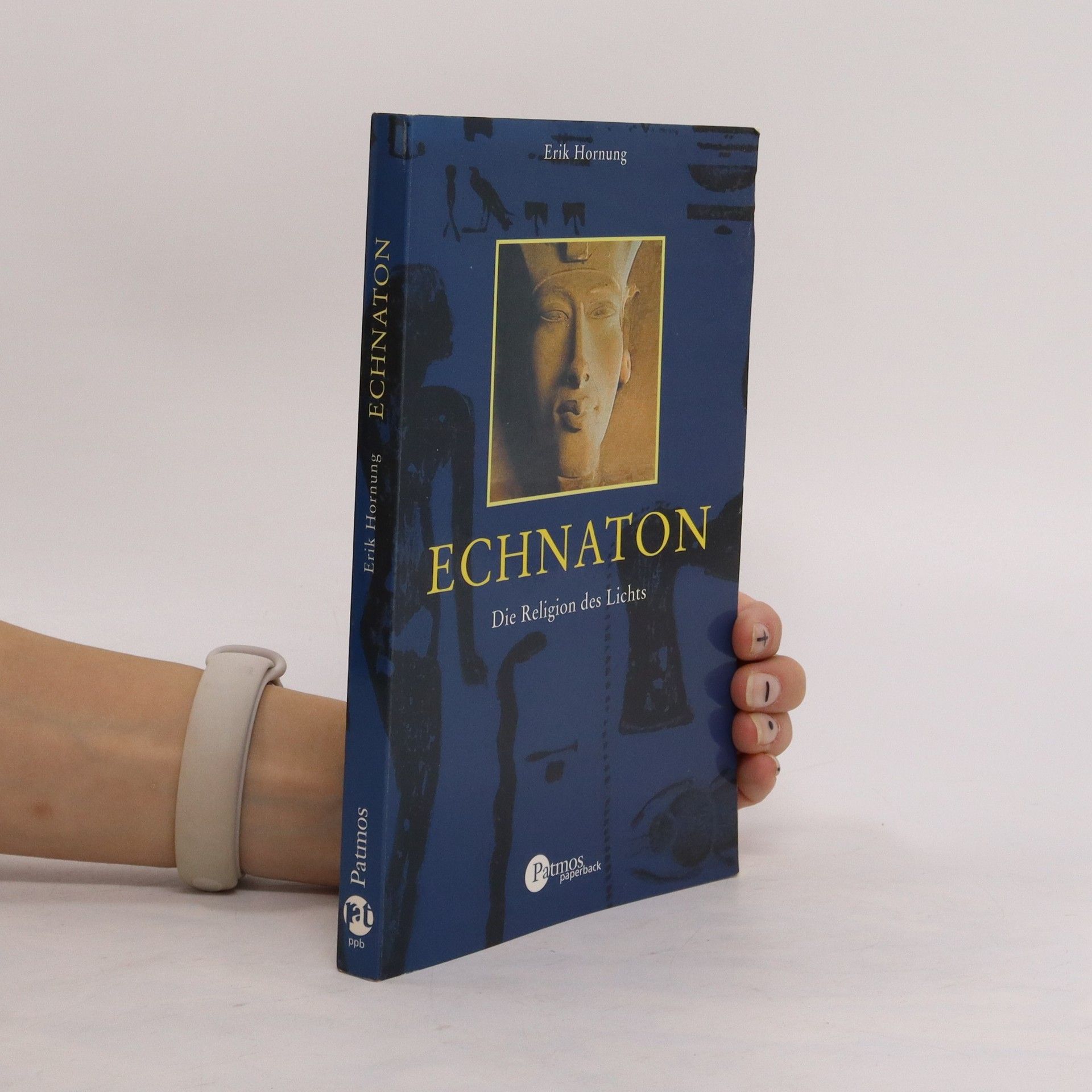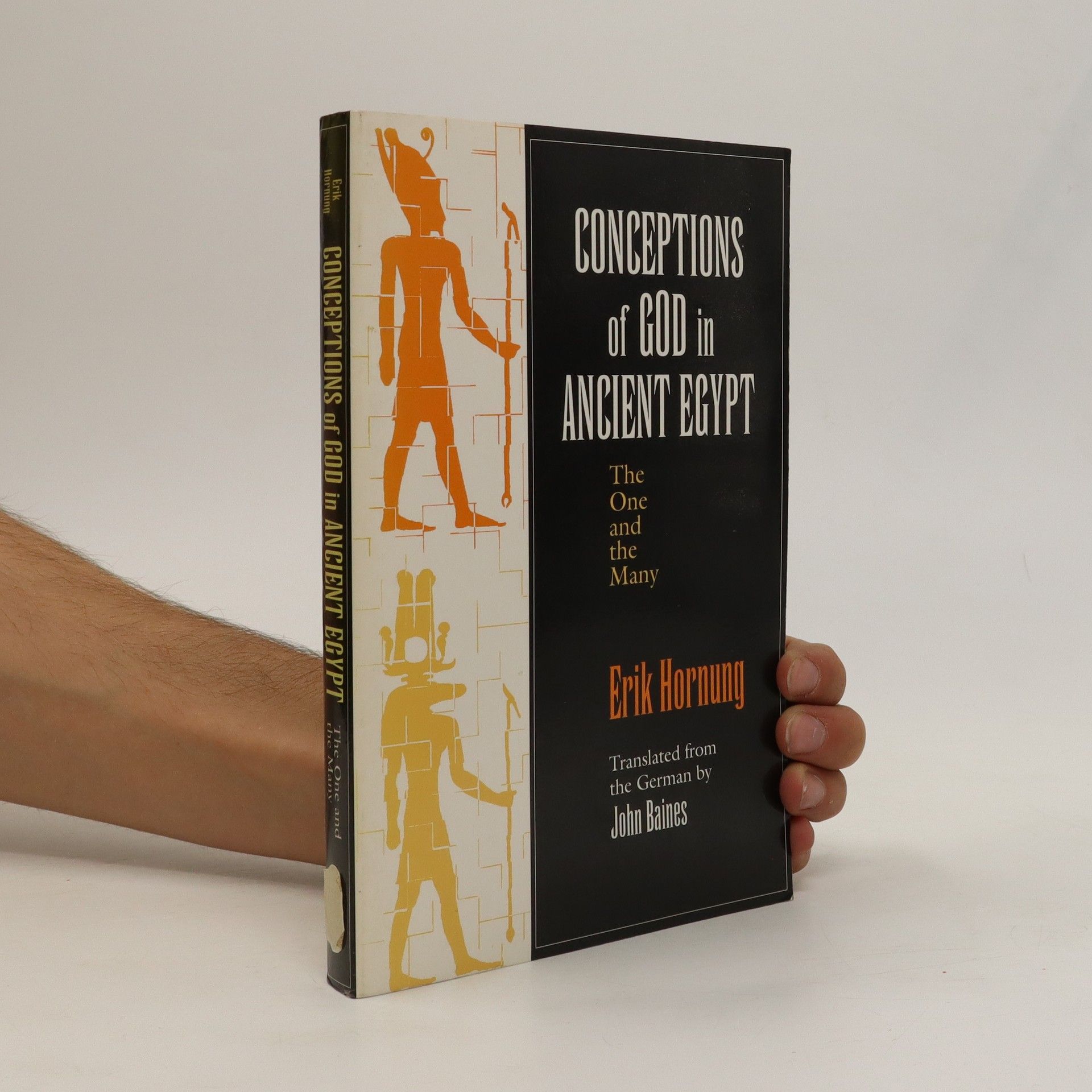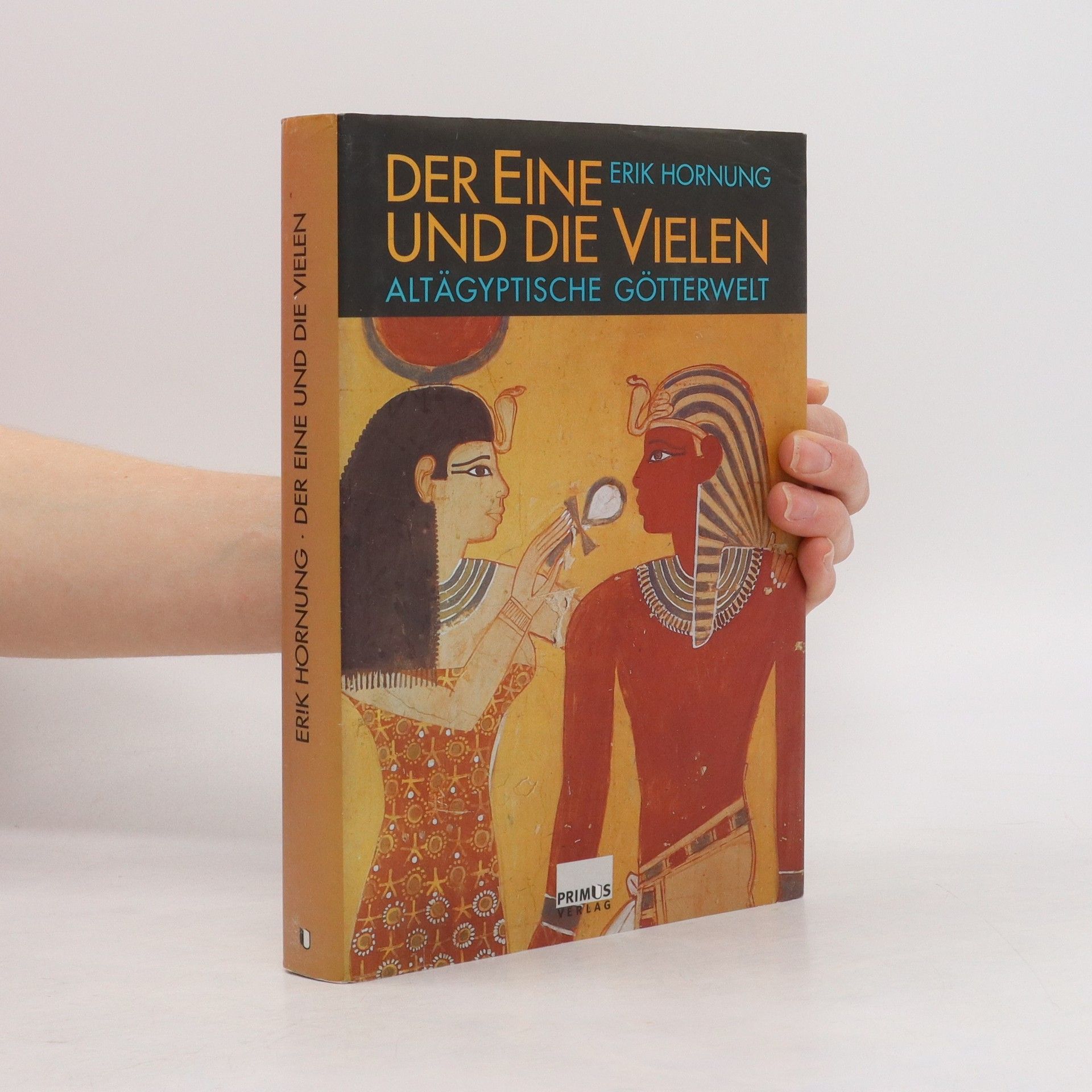Erik Hornung Book order
This author delves into the depths of ancient Egyptian funerary literature and the Valley of the Kings to uncover key aspects of ancient belief. His approach emphasizes that understanding complex thought processes requires a multifaceted perspective, not a single method. Through his best-known work, he explores the relationship between unity and plurality in Egyptian conceptions of the divine, establishing himself as a foremost authority in this literature. His writings, often translated into English, challenge readers to approach history and belief with seriousness and an openness to diverse interpretations.







- 2023
- 2013
Der Band untersucht die elementaren Kräfte von Feuer und Wasser, die gegensätzlich erscheinen, aber dennoch eng miteinander verbunden sind. Vor etwa 3,8 Milliarden Jahren entstand das erste mikroorganische Leben auf der Erde, als in den Ozeanen, wo die Hitze des Erdinnern austrat, Leben begann. Bestimmte Bakterien entwickelten die Photosynthese, was zur Produktion von Sauerstoff führte. Dieses Zusammenkommen von Feuer und Wasser, oder der Vereinigung des Trockenen mit dem Feuchten, ist fundamental für unser Leben. Die Beiträge des Bandes beleuchten die elementare Energie dieser beiden Kräfte in verschiedenen Epochen und Kulturen, von Heraklit über Paracelsus bis hin zum zoroastrischen Feuerkult. Die Eranos-Tagung, die seit 1933 den interkulturellen und interdisziplinären Dialog fördert, setzt diesen Austausch fort. Die Autoren aus verschiedenen Fachgebieten tragen zu einem neuen, einheitlichen Verständnis bei, das in unserer zerrütteten Welt Ordnung und Sinn stiften kann. Die Themen reichen von der Bedeutung des Wassers in Ritualen bis hin zu den philosophischen Aspekten des Feuers bei Heraklit und Empedokles.
- 2011
Ägyptische Gärten
- 259 pages
- 10 hours of reading
- 2010
Amarna
Lebensräume - Lebensbilder - Weltbilder
- 2005
Der Eine und die Vielen
Altägyptische Götterwelt
Amun, Isis, Die altagyptische Gotterwelt umfasst beinahe unzahlbare Gestalten mit etlichen Eigenschaften und Bezeichnungen. Erik Hornung, der Altmeister der deutschsprachigen Agyptologie, entwirrt in diesem Standardwerk das komplexe gottliche Gefuge der Pharaonenzeit von den Namen uber die Darstellungen und Eigenschaften bis hin zur Ordnung und Gliederung. Auf der Grundlage neuester Spezialstudien behandelt Erik Hornung den Umgang der Agypter mit ihren Gottern und bietet damit einen anschaulichen Einblick in diese faszinierende Kultur. -Ein meisterhaftes, sorgfaltig dokumentiertes Werk, das die akribische Auswertung der Text- und Bildquellen mit scharfsinnigen theologischen Einsichten verbindet.- Library Journal"
- 2005
Der vorliegende Band vereint die Vorträge der Eranos-Tagungen von 2003 und 2004 in Ascona. Die erste Tagung widmete sich der Schlange und ihrer Symbolik, während die folgende dem neuen Licht und Bewusstsein nachging, das aus der Begegnung mit dem Schlangendämon resultiert. Dieses lebendige Licht muss gebrochen werden, um vom Menschen erkannt zu werden, was an Fausts Hymne an die Natur erinnert. Das Thema der zweiten Tagung, Licht-Brechungen, stellt die Frage, wie das Geheimnis des Schöpferischen im Lichtphänomen sichtbar wird, das aus der Finsternis geboren wird. Die Schlange bleibt ein unergründliches Wesen, selbst wenn Wissenschaftler aus verschiedenen Disziplinen zusammenkommen, um darüber nachzudenken. Die Vielfalt der Beiträge reflektiert die ungebrochene Symbolkraft der Schlange und das tiefere Geheimnis des Lebens, dem wir uns nur annähern können. Die Inhalte umfassen Themen wie die Weisheit der Schlange im Islam, Begegnungen zwischen Mensch und Schlange, die ägyptische Sicht auf Schlangen, sowie die Rolle der Schlange als Geist der Erde. Darüber hinaus werden Aspekte des Lichts und dessen theologischer Bedeutung im Alten Ägypten behandelt, sowie die Verbindungen zwischen Bergbauern, Schamanen, Priestern und dem Jenseits.
- 2003
Das geheime Wissen der Ägypter und sein Einfluß auf das Abendland
- 232 pages
- 9 hours of reading
Das Ägyptenbild des gesamten Abendlandes ist bis heute meist esoterisch geprägt. Erik Hornung legt die Wurzeln der esoterischen Verklärung Ägyptens offen. Astrologie, Alchemie und andere Geheimwissenschaften, Rosenkreuzer, Freimaurer, Theosophen sowie heutige esoterische Bewegungen – der Hunger nach verborgenem Wissen und nach tiefer liegenden Zusammenhängen hat ein antikes, weitgehend imaginäres Ägyptenbild bis in die modernsten esoterischen Strömungen hinein lebendig erhalten. Von diesem Bild, das mit der geschichtlichen Wirklichkeit nur in losem Zusammenhang steht und ein Ägypten zeigt, das als tiefste Quelle allen Geheimwissens gilt, hatte sich die universitäre Disziplin der Ägyptologie, die 1822 mit der Entschlüsselung der Hieroglyphen durch Jean-François Champollion erblühte, strikt abgesetzt. Nun spürt der international renommierte Ägyptologe Erik Hornung dieser seit der Renaissance nahezu ungebrochenen Anziehungskraft auf die europäische Geistesgeschichte nach.
- 2003
- 2002
The quest for immortality
- 288 pages
- 11 hours of reading
Ancient Egyptian antiquities are dominated by art and artifacts depicting the Netherworld, the alternate universe which mummified bodies would enter at the end of their physical lives, where they would live on for eternity. In this dazzling book, photographs and exhaustive texts illustrate the promise of a glorious rebirth pervaded the daily life of Egyptians, from commoners to the most powerful pharaohs.
- 2002




